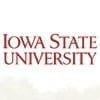Explore all the information on
Swine vaccines
Vaccinations are available for a number of diseases that affect swine. In some cases vaccination constitutes the major part of the control of the disease. In many other cases it is only a small part of the control program. Vaccination programs need to be tailored to each swine operation. Remember that vaccination only raises a pig's level of resistance. If other important management procedures are neglected, even this elevated level of resistance may be inadequate to prevent disease.
Vaccines must be stored and administered according to label directions if they are to be effective. Slaughter withdrawal time must be observed at all times to avoid illegal residues. The most common times for administering many vaccines are before breeding and before farrowing. This protects the sow and passes antibodies to the piglets for their protection.
Introduction: In 2010, three outbreaks of foot-and-mouth disease (FMD) occurred in South Korea. Among these outbreaks, the largest occurred from November 2010 to April 2011 and induced 153 total cases occurring in both cattle and pigs. During this outbreak, a nationwide vaccination policy was enforced and carried out in susceptible animals, including pigs. However, local reactions at the injection site were present after vaccination. Even now, these local reactions are...
Comments : 0
Recommendations: 0
Introduction: The objective of this study was to investigate the efficacy of two combinations of vaccines against PCV2 and Mycoplasma hyopneumoniae ( M hyo ) under Brazilian field conditions. Materials and Methods: This study was performed in a farrow-to-finish farm located in Minas-Gerais province, with a history of clinical PCVD and enzootic pneumonia during growing/finishing, and lack of homogeneity at slaughter time. A group of 896...
Comments : 0
Recommendations: 0
Introduction: Swine erysipelas (SE) is one of the diseases of greatest prevalence and economic importance in pork production. A protective role of specific antibodies against Erysipelothrix rhusiopathiae, the causative agent of SE, has long been suggested. Mass vaccination against SE is the most commonly used approach to control SE, which relies heavily on the development of a strong herd immunity. Despite the efficacy of existing vaccines, inadequate...
Comments : 0
Recommendations: 0
Introduction: Porcine epidemic diarrhea (PED) is an economically devastating enteric disease characterized by vomit and diarrhea. Currentcontrol method including oral administration with PED infected intestine has been used with some degree of success. However, this management protocol provide potential risk of pathogen recontamination into the herd. Porcine Epidemic Diarrhea Vaccine, RNA (Harrisvaccines , IA, USA) is the first USDA conditionally licensed PEDV...
Comments : 0
Recommendations: 0
Introduction: Porcine epidemic diarrhea caused by PEDV infection inflicts severe damages to swine industry. Though several attenuated strains such as CV777 and SM98 were used to vaccine production, recently field isolated strains were different from vaccine strains genetically as well as serologically. Recent PEDV isolates in Asia and USA show more contagious and more severe mortality than previous PEDV. Continuous vaccine strain development is essential for effective PEDV...
Comments : 0
Recommendations: 0
Introduction: Based on serological studies, it is assumed that PCV2 is ubiquitous in the pig industry across the world. The purpose of this study was to evaluate the benefit of PCV2 piglet vaccination on ADG and mortality rate from weaning to slaughter in a herd subclinically infected with PCV2. Materials and Methods: The study was conducted in a farrow to finish farm located in Brittany, France, positive for PRRSv, PCV2, APP, Mycoplasma hyopneumoniae,...
Comments : 0
Recommendations: 0
Introduction: The main impact of Porcine Epidemic diarrhea (PED) virus is high mortality in piglets between birth and weaning and as a consequence pig producers have serious economic losses. Since 2014, Mexico has been positive to PED virus as diagnosed by the PCR test. Materials and Methods: The aim of this study was to assess the effect of two vaccines against PED (manufactured by ZoetisTM and Harrisvaccines TM respectively) compared to no...
Comments : 0
Recommendations: 0
Introduction: Lawsonia intracellularis (L.i.) is the causative agent of porcine proliferative enteropathy (PPE). PPE is a relevant economic enteric disease that causes diarrhea and reduces weight gain in growing pigs (1). The subclinical form produces as well a negative impact on performance and farm economics. L.i is endemic in most of the Spanish farms (2). The aim of this study was to evaluate the efficacy of Enterisol® Ileitis (Boehringer Ingelheim Vetmedica...
Comments : 0
Recommendations: 0
Introduction: Salmonella Typhimurium and its monophasic variant (S. Typhimurium 1, 4, [5], 12:i-) are increasingly responsible of food borne infections in humans and pork represents the principal source of infection. Infection is generally sub-clinical in pigs and carrier pigs could introduce bacteria in the slaughterhouse. The aim of the study was to test the efficacy and safety of an attenuated vaccine of S. Typhimurium 1, 4, [5], 12:i- (S. Typhimurium Monophasic...
Comments : 0
Recommendations: 0
Introduction: Measuring the level of PCV2 virus and/or the level of IgG/IgM in blood samples can be used to assess if pigs are infected or not during the later stages of fattening. The purpose of this case study was to investigate if PCV2-virus is detected or serologically active in fattening herds with pigs vaccinated at 4 weeks (± 7 days) of age with Porcilis® PCV, CircoFLEX, Circovac or Suvaxyn PCV. Materials and Methods: In seventeen herds...
Comments : 0
Recommendations: 0
Introduction: In this study, we compared the production performance of PCV2 vaccinated animals in terms of weight gain, average daily gain and mortality in two commercial farms. One farm vaccinated with Circovac (Merial Animal Health) and the other with Fostera PCV (Zoetis Animal Health) at 3 weeks of age. Both of these vaccination programs were compared against Porcilis® PCV (MSD Animal Health). The farms, which are located in the northern part of Luzon, use...
Comments : 0
Recommendations: 0
Introduction: Porcine reproductive and respiratory syndrome (PRRS) is considered the most important viral disease of intensive swine production because of the severe economic losses associated with it. Generally, the disease causes reproductive failure characterized by infertility, mummifications, abortions, still-births and birth of weak piglets in sows, and respiratory distress in piglets and growing pigs. There are several studies on the occurrence of PRRS in pig herds in...
Comments : 0
Recommendations: 0
Introduction: Porcine Dermatitis and Nephropathy Syndrome (PDNS) is a clinical sign of Porcine Circovirus Associated Disease (PCVAD). PDNS is characterized by purple skin lesions with black center, fever, and lethargy, mostly affecting fattening pigs between 12-16 wks old. Vaccination is one of the tools to handle PCV2 and PDNS. This case report illustrates the real situation in pig farm in Thailand that suffered from PDNS for years and how the farm changed vaccination program...
Comments : 0
Recommendations: 0
Introduction: A new strain of Porcine Epidemic Diarrhea virus (PEDv) occurred in the Republic of Korea in November 2013 and continues to impact the swine industry up to now. The new strain was sequenced and the results showed that the spike protein gene of this newly prevalent PEDv is 99.64%~99.81% homologous to the PEDv isolated in USA from 2013 to 2014. CAVAC acquired ISU46065IA13 strain (genotype 2a), a field isolate by Iowa State University, USA, and developed a new...
Comments : 0
Recommendations: 0
Introduction: Objectives 1) Determine the sow serum-neutralizing antibody titer (NABT) baseline status and response from a 2 dose blanket vaccination of Zoetis’ conditionally licensed PEDv vaccine in both a naïve population, and a farm previously exposed to PEDv. 2) Determine the NABT level expressed in colostrum and milk after triple vaccination in these farms. Materials and Methods: A historically naïve (Farm A) and a...
Comments : 0
Recommendations: 0
Introduction: PRRS infection is one of the most serious diseases that causes huge economic loss. The purpose of this study is to evaluate 3FLEX® vaccination to control PRRSv infection in the nursery and to compare the efficacy when vaccinated separately or as 3FLEX®, in the combination with FLEXcombo®. Materials and Methods: The study was performed in a farrow to finish one site farm of 200 sows. The farm used already FLEXcombo®...
Comments : 0
Recommendations: 0
Introduction: Porcine reproductive and respiratory syndrome virus (PRRSV) is endemic in major swine producing countries. Dual-technology (DT) vaccination programs combining modified live vaccine (MLV) and killed vaccine (KV) have gained interest in order to better control PRRSV infection and favor whole herd stabilization. A survey for PRRSV circulation in the pig flow on eight farms having implemented a DT vaccination program in sows was performed by monitoring the PRRSV...
Comments : 0
Recommendations: 0
Introduction: Vaccination against PCV2 and Mhyo has become a standard measure in the swine industry worldwide. The objective of this study was to compare the efficacy of a freshly mixed PCV2 and M hyo combination and a pre-manufactured PCV2/M hyo vaccine combination against a PCV2b challenge. Materials and Methods: The trial was conducted as a randomized, blinded vaccination-challenge efficacy study with 55 CDCD pigs. Animals were included at about 21 days of...
Comments : 0
Recommendations: 0
Introduction: The PRRS vaccines have been considered as a part of the tools to control PRRSv problems. Several commercial type 2 PRRS vaccines are available in the Thai swine industry. The aim of this study is to compare the efficacy of PRRS vaccines type 2 vaccination in piglets in a commercial farm in Thailand. Materials and Methods: The retrospective study was observed in 1,300 sows farrow – nursery farm with conversional system located in...
Comments : 0
Recommendations: 0
Introduction: The aim of this study was to compare the humoral immune responses elicited in naïve pigs by five different inactivated monovalent Erysipelothrix rhusiopathiae vaccines. Materials and Methods: A controlled, blinded field study was performed on a 360-sow farm located in Catalonia (Spain). A total of one hundred and eighty 13-week-old pigs, clinically healthy and free from antibodies against E. rhusiopathiae , were randomly...
Comments : 0
Recommendations: 0



.jpg&w=3840&q=75)


.jpg&w=3840&q=75)







